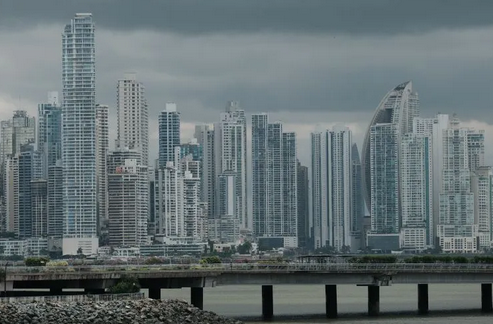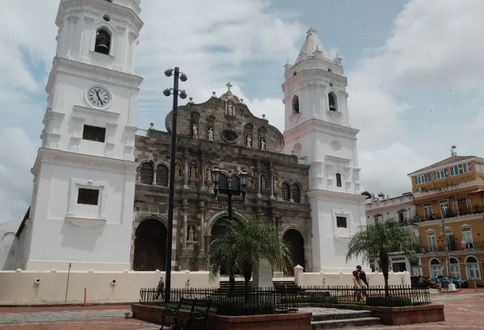Panama-City
Panama-City is primarily known for the Panama Canal and less as a travel destination. But I can tell you that I enjoyed my first stay there so much, that I decided to return as soon as possible. Currently I plan to spend my birthday on the 24. January 2026 in Panama-City and I already know, this will be an amazing time! But first let me explain you why I am so eager to go back to Panama-City…
Nice to know…
Panama is located in Central America and borders Costa Rica to the west and Colombia to the east, forming the border between Central and South America. Panama has a total population of 4.5 million, of which over 800,000 live in the capital. Panama City is Central America’s most modern metropolis, complete with an impressive skyline.

Panama City is the capital and seat of government of Panama, is best known for the Panama Canal, the 82-kilometer-long waterway that connects the Atlantic and Pacific Oceans. The skyline is incredibly impressive, and you get a great view of it from the long coastal road that connects the old town with the new town. In general, Panama City is super modern; people ride e-scooters around the city, there’s public Wi-Fi, modern restaurants, and a metro system. In general, the American influence is very noticeable – unfortunately, also when it comes to prices.
Highlights & To do’s
One highlight is, of course, the Panama Canal. The best view of the canal is from the Miraflores Locks, located half an hour outside of Panama City. In the city itself, the old town, Casco Viejo, is a must-see: In this UNESCO World Heritage-listed district, magnificent colonial buildings, most of which have been beautifully restored, meet modern cafés, restaurants, and boutiques. A charming mix that we really enjoyed.
From the old town, you should walk up the Cinta Costera promenade: The footpath runs directly along the sea, with green space next to it and then a multi-lane road. The path offers a fantastic view of the skyline, and the bridges that cross the highway make for great photo opportunities. And the skyline is truly impressive: 22 skyscrapers over 200 meters tall are located there alone. We couldn’t get enough of the view.

Other highlights include the Metropolitan Natural Park and the Cerro Ancón Reserve: two green nature reserves located right in the heart of the city, offering fantastic views of the skyline. If you have more time, it’s worth visiting Panama Viejo, a ruined city that contains original buildings from the first Spanish settlement. The whole thing is located east of present-day Panama City and costs ten dollars to enter. And if you’re in the mood for some shopping, you’ll also find plenty to do in Panama City, for example, at the Albrook Mall, one of the largest malls in the world. It also serves as the city’s transportation hub, from which the metro and numerous short- and long-distance buses operate.
Some useful Information for your Stay in Panama-City
When is the best time to travel?
Panama generally has a tropical climate, meaning it’s hot year-round and has two seasons: the rainy season and the dry season. The best time to visit Panama is the dry season, from December to April. However, rain showers can occur during this time as well. May to November is the rainy season: It doesn’t usually rain all day, but mainly in the afternoon/evening.
How long should I plan to stay?
Depending on what and how many places you want to see in Panama, you should plan for between one and three weeks. If you’re traveling through Central America, you can explore Panama in a week; if you’re flying there specifically for a vacation, you should plan for two to three weeks. We were only there for a week and were able to explore Bocas del Toro and Panama City during that time. If you also want to visit the San Blas Islands, for example, you should allow more time.
Currency and credit card?
In Panama, you pay with US dollars. For cash withdrawals, we recommend a good travel credit card, such as the free awa7 credit card from Hanseatic Bank* or the Visa debit card from DKB*, which allow you to withdraw money worldwide for free. Regardless, there is an ATM fee in Panama. We paid $5.25 for one withdrawal.
Is Panama-City is safe place for tourists?
Panama is generally considered a relatively safe travel destination in Central America. We never felt uncomfortable during our stay. As always, follow basic rules of conduct, such as not carrying excessive amounts of cash and not leaving valuables in your car. In the capital, Panama City, there are a few neighborhoods you should avoid, and this also generally applies to the country’s second-largest city, Colón. The border region between Panama and Colombia, the Darién Gap, is a no-go zone. In this rainforest region, the Pan-American Highway, which otherwise stretches uninterrupted from Alaska to Tierra del Fuego, is interrupted. Drug smugglers and armed paramilitaries dominate the area.
Is Panama expensive?
Panama is slightly cheaper than Costa Rica, but more expensive than other Central American countries like Guatemala and Nicaragua. We’ll cover this in more detail in the Costs section further down in the country guide.
Do I need to speak Spanish?
Spanish is the national language in Panama, as in all Central American countries (except Belize). English isn’t widely spoken in Panama, so at least a few words of Spanish are definitely helpful. But if you don’t speak Spanish, that shouldn’t be a reason not to travel: In an emergency, you can always communicate using gestures.